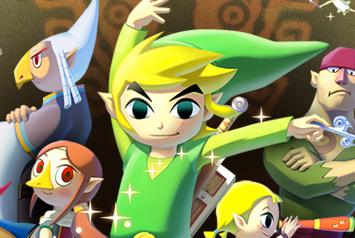Editor’s note: Tadhg Kelly is a veteran game designer and the creator of leading game design blog What Games Are. You can follow him on Twitter here.
There are three kinds of articles that regularly get written about Nintendo.
The first article says Nintendo’s hardware business is doomed and talks about how impossible it is becoming for the company to survive in the modern world. The reasons for the doom are several (a few years ago it was the encroachment of HD, now it’s the rise of mobile). Either way, its author says, there’s no room for Nintendo in the New Order of Devices. It better start making games for other platforms.
The second article is similar, but rather than focus on devices, it laments the state of the company’s games. How long, the author asks, can Nintendo get away with pumping out sequels and rehashes year after year? How much life do those old tired characters have? Mario will surely die any day now. It needs some new games or else.
The third article, including this one, says that only a fool bets against Nintendo. Nintendo, it says, is different. Because it is.
This week we saw two pieces of evidence that show Nintendo’s still got its groove. The first was the news that the release of an HD’d version of The Wind Waker caused sales of the Wii U to rise by nearly 700 percent in the U.K. And the second was the release of the 2DS. It’s very cheap and I reckon it’s going to sell well.
Nintendo is uniquely positioned. There are a few companies that attract legions of fans who live or die with its successes or failures (Blizzard and Valve for instance) and equally few that have the financial muscle to make games machines. Only Nintendo has both. In the games industry it’s the one platform maker whose strategy is to make machines that fit the kind of games it wants to make. It trusts that the market will buy in.
Nintendo isn’t trying to be a platform business in the way that most tech companies are. It doesn’t tend to aim for the cutting edge or be too bothered about how much extra functionality is included in its platforms. It doesn’t seek to impress through power. Instead its consoles and handless are frequently plasticky and cheap rather than svelte and expensive. However they’re usually innovative, and fans love them for it.
Another key difference is Nintendo’s games. While game reviewers have always bemoaned the slow pace at which Mario, Kirby, Zelda, Pokemon, Metroid and a bunch of other games actually develop, these franchises continue to find an audience. Almost every game developer I know buys a Nintendo system despite themselves because they want to play one of those new releases. A recent example is Animal Crossing: New Leaf which, over the summer, filled my Twitter feed. Everybody had something to say about the comings and goings of Tom Nook.
At the same time “The Nintendo Difference” is somewhat divisive. The company’s games can be chalk and cheese and its platforms often don’t show the same breadth of content as others and its third-party dealings have always been a bit iffy. In some ways its marketing story boxes the company in. While it has had some huge hits in the last decade, most notably the Wii, it has done so at a cost. A lot of true fans felt that the company had turned its back on them in search of the casual gaming dollar, and so when it came time to buy into the sequel they paused. But that doesn’t mean they’d gone for good.
The reason this formula keeps working is that Nintendo understands franchises. The games business likes to act like the movie business sometimes (see David Cage’s Beyond: Two Souls) but really it’s more like the comics industry. Games journalists may like to think there should be an overall narrative to the medium where new faces are supposed to replace the old, like Hollywood, but historically that’s not supportable.
Rather than find a ton of new faces, the industry keeps updating old faces year after year, just as comic companies do with their characters. And, again just like comics, fans respond with undying loyalty. The plain fact is people buy Zelda after Zelda after Zelda.
Ultimately the Nintendo difference is about patience. Because the company has zillions of true fans it is not in a position where it has to rush. It may come across as dorky, and its products may fail to find market fit on first release. Yet over time it wends its way through those issues and finds the right game and price point to make its platforms attractive.
It sits, waits, evaluates and patiently prods until it gets to where it wants to be. It relies on the quality of its software product to eventually persuade people to come around. It takes the time to make its games right. It knows that the physical quality of its hardware is not a deal breaker. And even when it diverges from what the fans believe in, Nintendo has the patience to win them back.
And that’s why Nintendo survives and usually thrives. In the short term it’s obvious that it has some issues to deal with, and in the medium term yes there are threats. Mobile gaming is a big deal. Yet as long as Nintendo continues to satisfy those fans who’ll go out and buy whole game systems just to get their hands on rehashed versions of The Wind Waker, Nintendo’s going to be okay.
